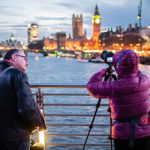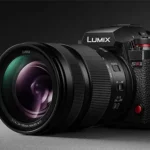Noise is an inherent part of photography. Whether you’re shooting at noon, dusk, or at the dead of night, a varying degree of noise is always going to be a part of your imagery. Of course, that depends on the quality of the sensor and the underlying technology, and some cameras handle noise better than others. Jimmy McIntyre has a technique that allows you to handle noise better:
There are many post-processing techniques for noise removal. Some use click and forget tools, which make the while process of noise removal a breeze. But as with all techniques, there are some limitations. Not all of them tend to work in all situations. This technique also has its limitations. But first let’s describe the technique.
This is one of the frames McIntyre captured before post-processing in Photoshop:

This is one of the frames before the technique is applied
Looks fairly decent until you zoom in and then it when the noise hits you.

Level of noise when zoomed in
The technique to remove this from the final image is to shoot multiple exposures and then blend them together in Photoshop. Here’s how it is done.
- Make multiple frames of the same composition with the same exposure details.
- Import the images to Photoshop as different layers.
- Make sure that the layers are correctly aligned. If you are using Raya Pro you can simply click ‘Auto Align’ to align the layers. For other users, click on Edit > Auto-Align Layers.
- Go to Layer > Smart Objects > Convert to Smart Object.

Convert the layers into a Smart Object
When you do that all the layers will be flattened into a smart object.
- The final step is to go back to Layer > Smart Objects > Stack Mode > Median. This triggers Photoshop to find the mean value of all the pixels from each layer stacked on top of each other. You will notice that noise moves in between frames. Thus, there is a good chance that the final image is going to be a lot cleaner than any single frame.
Once Photoshop finishes you are likely to have an image that is a lot cleaner, like this one:

The image after the layers were blended using Stack Mode > Median
Here’s a quick before and after comparison:

Here’s a quick before and after recap
As has already been mentioned, this technique has some shortcomings. It will work best when the frames have been made on a tripod. You’ll also want to have as little exposure changes as possible and as little movement in front of the camera as possible.
Like This Article?
Don't Miss The Next One!
Join over 100,000 photographers of all experience levels who receive our free photography tips and articles to stay current:






Nice….can you do one for LR6
Does this work for cs4?